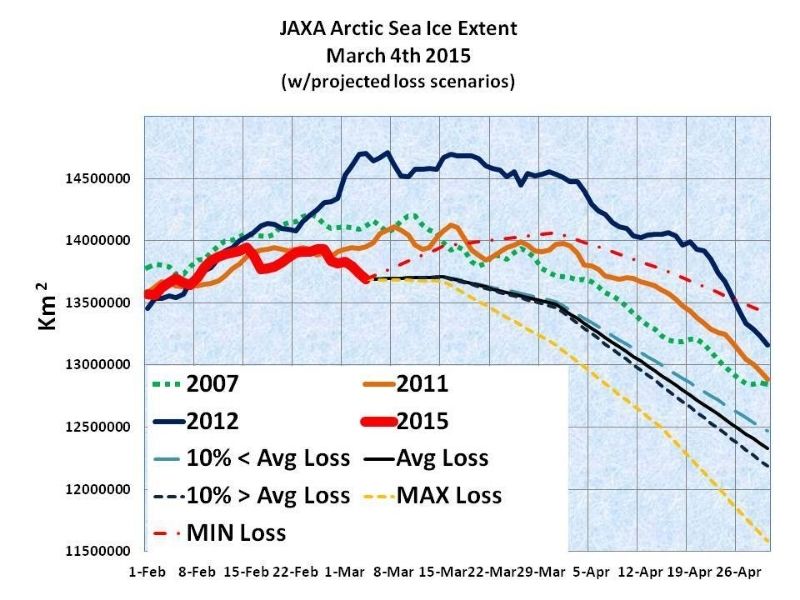
Just to have some fun, I thought I'd run some projections, thru April based prior years data. I used all years from 2003 - 2014, looking at gains/losses for 4 time frames; the first 15 days of March, the last 16 days of March, the first 15 days of April and the last 15 days of April. What somewhat surprised me was that during the first half of March there was an average daily gain of almost 1,900 Km
2 followed in the second half of March with an average daily loss of almost 6,900 Km
2. I was equally surprised to see how linear the average daily losses were in April with the first half losing just over 38,000 Km
2 during the first half and just over 39,000 during the second half of the month.
Using the average gain/loss for each of the 4 time frames I plotted 3 projected scenarios; 1 using 10% less than the average, 1 using the average and 1 using 10% more than the average for each day. To plot the extreme MIN and MAX scenarios, for each time frame, I selected data from the year having the Best Case and the year having the Worst Case data. For Example:
1. For the first half of March, 2013 had an average daily gain of only 1,601 Km
2 and 2014 had an average daily loss of 24,216 Km
2.
2. For the last half of April, 2007 had an average daily loss of 23,872 Km
2 and 2012 had an average daily loss of 60,507 Km
2.
What I am most concerned about right now is what will happen in the next 10-12 days. In reading comments on this and other threads, it appears that this ice is thinner this year, the Arctic temps will remain high for the next week and there may be a cyclone on the way. This it makes it unlikely that there will be in net Extent gain between now and the middle of March. If it turns out that there are significant Extent losses in the next few weeks almost any scenario will keep 2015 in close contention with 2007, 2011 and 2015.
We may be entering uncharted waters (without the ice!!)